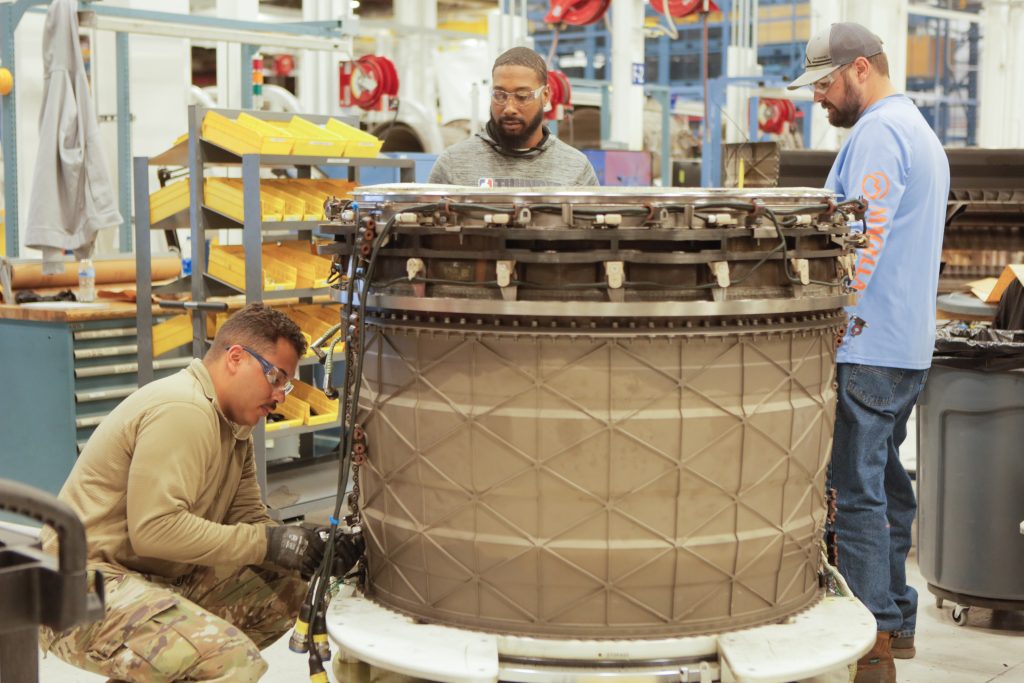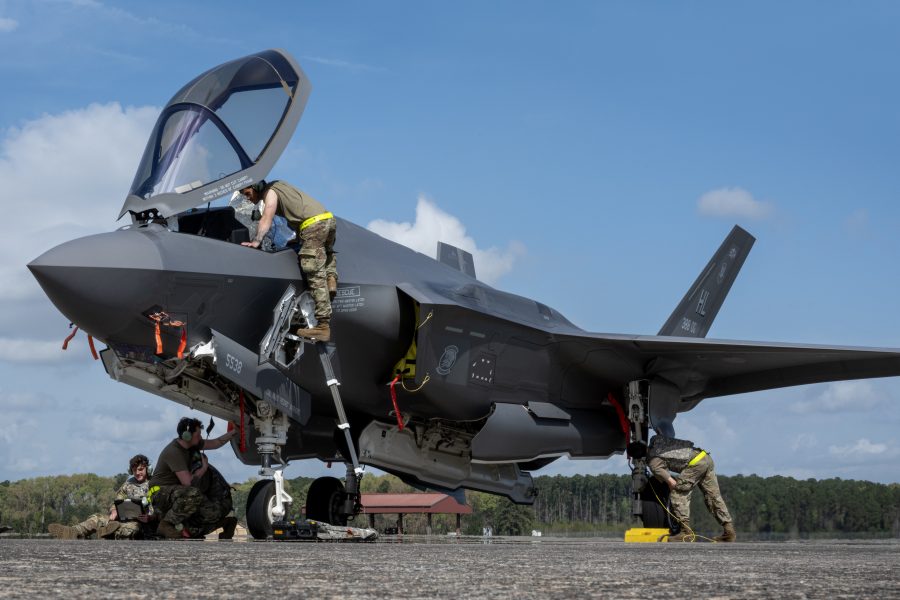The Department of the Defense and the military services want to take more control over the massive F-35 sustainment enterprise—and are required by law to do so in 2027. However, the DOD lacks a detailed plan to do so, according to the top government watchdog.
The Pentagon should reassess its approach to key parts of the F-35 sustainment enterprise, according to a new report from the Government Accountability Office.
The Sept. 21 report paints a grim picture of the current state of F-35 sustainment, a longtime concern of lawmakers and Pentagon officials. The program carries a massive $1.3 trillion price tag over the life cycle of the fighter and faces unmet goals for key metrics such as aircraft availability and mission capable rates.
“Although the [F-35] program continues to grow and expand its scope of operations, its underlying sustainment strategy remains in question due to rising costs and poor readiness. … This is a critical time for DOD and the military services to determine adjustments that need to be made to F-35 sustainment to better achieve their desired objectives in an affordable manner,” the report authors concluded.
Problems
Under the current model, F-35 sustainment is principally contractor-led, with the aircraft-maker Lockheed Martin and engine-maker Pratt & Whitney taking the lead on most of the core maintenance functions.
Under this arrangement, however, the program has consistently failed to meet performance goals. As of March 2023, the entire F-35 fleet’s mission capable rate was roughly 55 percent. The mission capable rate for the F-35A, the variant flown by the Air Force, was 50 percent—far below the 90 percent goal for the F-35A.
Broken down even further, the percentage of F-35s that are not mission capable due to maintenance issues and a lack of parts have been above program targets for years. The average amount of time needed to repair an F-35 component is 141 days—compared to the goal of 60-90 days.
There are some positive developments: the GAO report noted that Pratt & Whitney has significantly reduced the number of aircraft without engines, an issue that grounded more than 40 fighters at one point. And Lockheed Martin has said it has slashed its maintenance costs in half the last seven years.
But the report noted serious problems at both the depot and organizational levels holding sustainment back.
At the F-35’s depots, where more complex repairs and overhauls are done, maintainers only have the ability to repair 44 of 68 core components, and the Pentagon told the GAO investigators that they don’t anticipate having the ability to do all 68 repairs until 2027.
“Three challenges—lack of prioritizing funding, heavy reliance on contractors, and lack of technical data—have affected the department’s ability to build depot maintenance capability,” the report stated.
The latter two issues go hand-in-hand: because Lockheed, Pratt, and their subcontractors own much of the technical data, the DOD does not have the ability to train its maintainers on key aspects of F-35 maintenance.
“According to officials from one depot we visited, components needing repair come with a Depot Component Maintenance Manual,” the GAO authors wrote. “However, these manuals are ambiguous and rarely are detailed enough for depot personnel to make the repair. As a result, depot personnel not only cannot fix the part, but they cannot learn and understand how to fix the part.”
As long as the depots are limited in their ability to perform certain repairs, mission capable rates will continue to suffer, the report concluded, citing a DOD analysis.
At the organizational level, where more minor repairs occur, there are problems as well.
“These challenges include insufficient and unavailable technical data (including part numbers), spare parts, support equipment, and training for maintainers,” the report stated. “In general, maintainers at all three locations we visited tied these challenges back to the limited capacity and capability of the military services’ maintenance units in conducting organizational maintenance as a result of being reliant on the contractor.”
The contractors are responsible for the supply chain, meaning the government has limited control over the flow of spare parts, and the lack of technical data like part numbers means maintainers must wait for the contractor to provide services.
“F-35 maintainers at one location told us that they have access to so little technical information on the aircraft that they do not fully understand the aircraft or how to troubleshoot common problems,” the authors noted. “As a result, the maintainers frequently rely on contractor personnel for assistance in maintenance tasks they would be otherwise qualified to complete.”

Path Forward
Many of the issues covered by the GAO report are not new—the agency has noted them in several reports over the last few years. Pentagon officials have made it clear they want to tackle the problem and take more ownership of the sustainment enterprise.
The urgency, however, is growing. In the 2022 National Defense Authorization Act, Congress directed the F-35 Joint Program Office to pass along all “management, planning, and execution” for F-35 sustainment to the respective military services by October 2027. Yet the Pentagon still has “not finalized the specific roles and responsibilities of the military services, Joint Program Office, and prime contractors.”
Even beyond the 2027 timeline, the GAO authors urged the Pentagon to figure out how much of the sustainment enterprise it wants to take on from the contractors.
A business case analysis in 2021 explored four potential options and recommended the government continue to rely on contractors while using a “performance-based logistics” contract, but the GAO report noted that “the military services and other program stakeholders, including the foreign partners, had varied views on whether the recommendation from the business case analysis was the best course of action for the program.”
As a result, no action has been taken, and a PBL contract, which Lockheed Martin has pushed for, is still uncertain.
Figuring out the right path forward will depend on the Pentagon’s access to the necessary technical data, which takes time and money to negotiate with contractors. Without it, however, growing the “organic” ability to do F-35 maintenance won’t work.
“The two issues—roles and responsibilities across and within the … contractor-led sustainment elements and sufficient technical data—are interdependent,” the report concludes.
To address the issues, the GAO report includes seven recommendations, related to the seven different contractor-led sustainment elements. For each element, the authors recommend, the Pentagon and the military services need to reassess their roles and that of the contractors, while also considering what technical data they will need.
